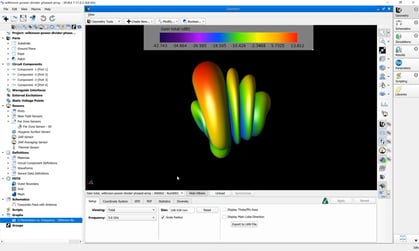XFdtd Simulation of Electric Fields Between Two Headphones

We were curious how the electric fields between two headphones on the body interact in relation to the human head. Does most of the coupling occur due to waves traveling around or through the head?
We simulated four scenarios in XFdtd:
- Scenario A: The realistic case: two headphones on an unaltered human head.
- Scenario B: The human and freespace are split in half by an infinite sheet made of a perfect electric conductor (PEC).
- Scenario C: A PEC plate surrounding the head (i.e., waves must travel through the human to reach the other headphone).
- Scenario D: The PEC plate splits the human in half, but freespace surrounds the human (i.e., waves are free to travel around the head).
A: Realistic Case (waves travel through and around head)
S11 = -9.123 dB
S21 = -57.120 dB
B: Infinite PEC Sheet (the headphones are purely decoupled)
S11 = -9.09 dB
S21 = -inf

C: PEC Around Head (waves may travel through head)
S11 = -9.1 dB
S21 = -87.358 dB

D: PEC Inside Head (waves may travel around head)
S11 = -9.17 dB
S21 = -57.042 dB

Conclusions:
Since Scenario A and D have essentially the same coupling, it can be determined that the energy predominately travels around the head. Although low, coupling is not lost when the waves travel through the head since the coupling is -87.4 dB in Scenario C.
Most of the fields travel around the head, although there is a small amount of coupling through the tissue.
More Details:
- The antennas are curved PIFA antennas.
- The human body and its eyes are made entirely of Silicon Type II at 2.44 GHz.


